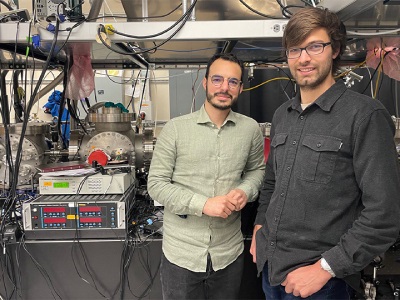
Enrico Ridente (left) and Eric Haugen at Berkeley Lab - Enrico Ridente/Berkeley Lab
Researchers at Lawrence Berkeley National Laboratory have accurately visualized the distortions of chemical bonds in a methane molecule following light absorption, electron loss, and relaxation of the molecule. With significant implications for advancing the development of novel methods to manipulate chemical reactions, this groundbreaking study provides valuable insights into molecular dynamics.
By utilizing these new methods, researchers are able to track the movement of electrons during chemical reactions and analyze how excess energy is redistributed in excited molecules on ultrafast timescales. By providing insights into how molecules react with light, the methods presented in this study could provide new methodologies for controlling chemical reactions.
In the study published in Science, researchers utilized ultrafast X-ray spectroscopy to observe the evolution of the structure of ionized methane molecules over time, capturing a time series of spectral signals that revealed the distortion of the initially symmetric shape over a ten-femtosecond period, demonstrating a phenomenon known as Jahn-Teller distortion. Researchers utilized methane as the test molecule due to its simplicity and its tendency to stay intact when excited.
"We can now explain how the molecule distorts after losing an electron and how the energies of the electrons respond to these changes," said Diptarka Hait, a graduate student at Berkeley Lab. Future applications of these new methods could lead to innovations in energy conversion devices and photocatalysis applications when used to analyze more complex systems or distortions.